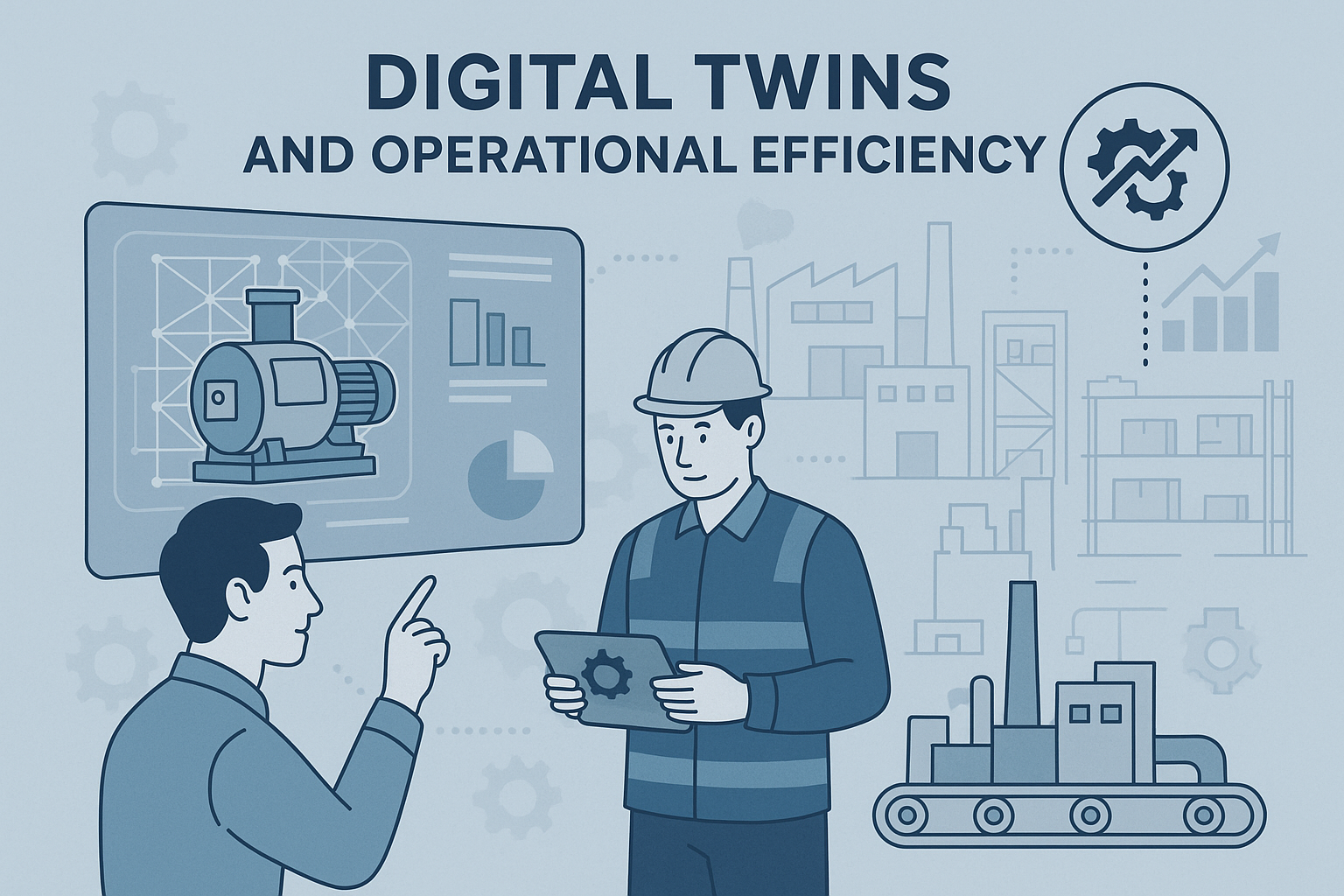In the age of Industry 4.0, operational decisions are no longer driven by guesswork—they’re modeled, simulated, and optimized using Digital Twins. These virtual replicas of physical systems allow businesses to test changes, predict failures, and maximize performance before touching real assets.
What Are Digital Twins?
A Digital Twin is a dynamic digital model that mirrors a physical object, process, or system. It constantly receives data from sensors, machines, or environments to simulate behavior in real time.
Types of Digital Twins:
Product Twin – Simulates the lifecycle of a product (design → usage → maintenance)
Process Twin – Models workflows (e.g., supply chains, manufacturing)
System Twin – Represents interconnected systems (e.g., smart factories or energy grids)
How They Improve Operational Efficiency
1. Real-Time Monitoring
Detect anomalies in performance or behavior
Minimize downtime with predictive maintenance
2. What-If Simulations
Test operational changes virtually (e.g., new machine settings or logistics flows)
Reduce risk and increase planning accuracy
3. Data-Driven Decision Making
Optimize resource usage, energy consumption, and throughput
Enable continuous improvement loops
4. Remote Operations
Manage and monitor physical systems from anywhere
Boosts safety and resilience during disruptions (e.g., pandemics)
Real – world Examples
Manufacturing: Siemens uses digital twins to simulate production lines, improving efficiency by 20–30%
Smart Cities: Singapore runs a city-wide twin to optimize traffic, infrastructure, and emergency response
Energy: GE Power uses twins to forecast turbine wear and reduce unplanned outages
Challenges and Enablers
Challenges:
High setup costs and data integration complexity
Real-time data fidelity and latency
Requires deep domain + modeling expertise
Enablers:
IoT and edge computing for data collection
AI/ML to predict and optimize behaviors
Cloud platforms (e.g., Azure Digital Twins, AWS TwinMaker)
Conclusion
Digital twins transform operational management from reactive to proactive. They’re not just simulations—they’re strategic assets for resilience, efficiency, and innovation in modern enterprises. As technology matures, expect digital twins to become the default lens through which businesses manage physical reality.





